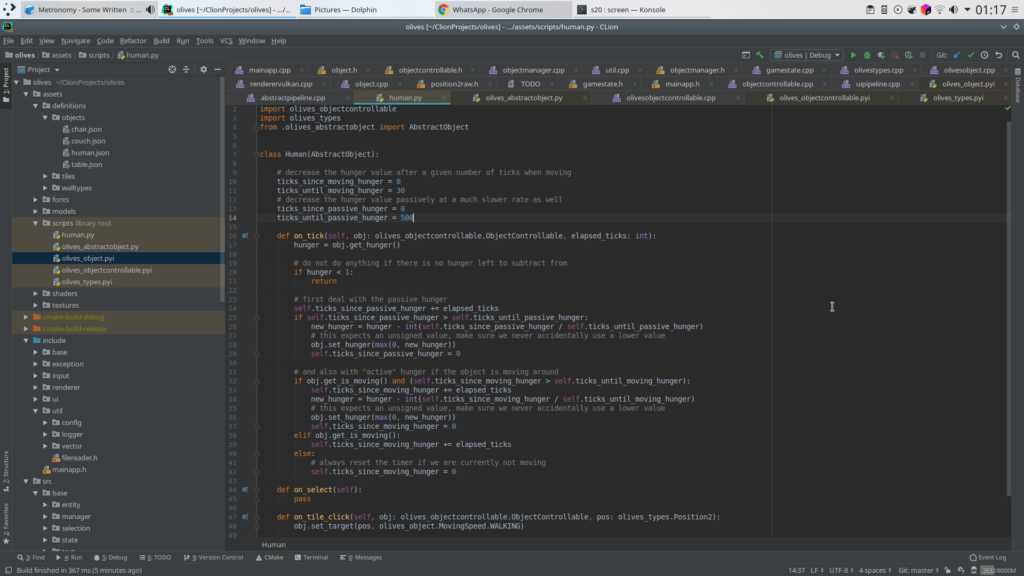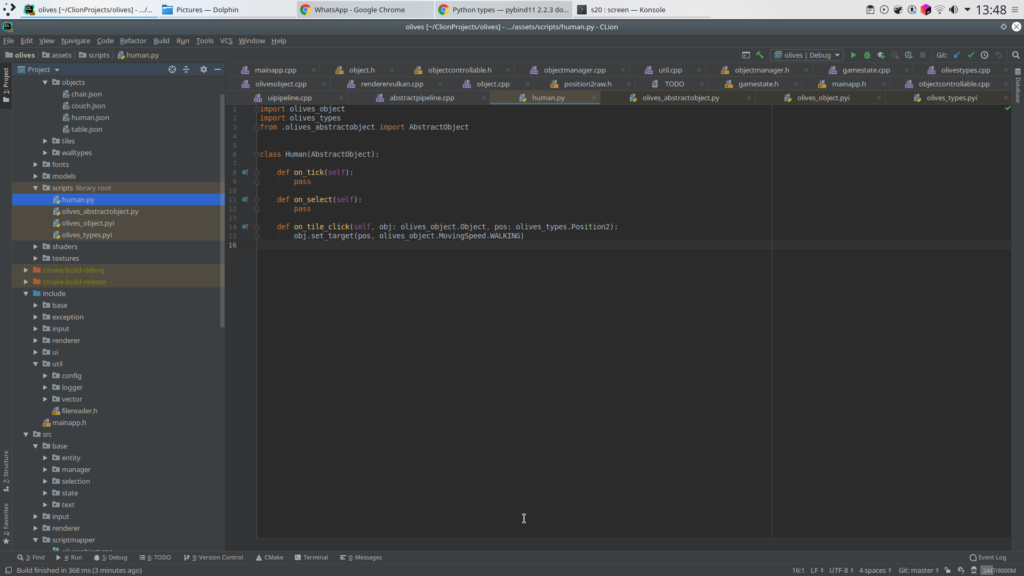Add job queues (per object) and wire everything up so that objects work through a work queue
This brings a lot of pieces together, finally not only are single jobs executed, but an arbitrary number of jobs can be queued up and executed in order, the interface in the ObjectManager looks like this for the time being:

What is still missing here is cancelling jobs, but one step at a time. 🙂
If you look carefully at the console output you can see the job queue in action:






